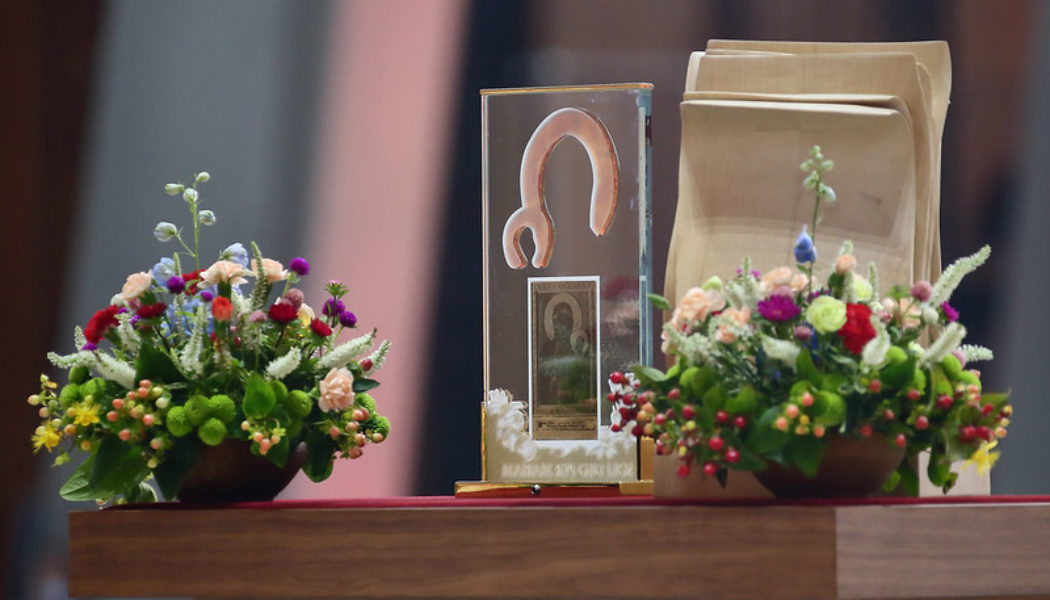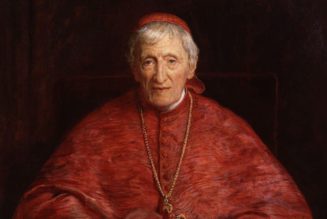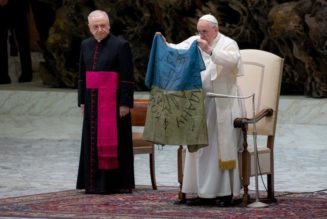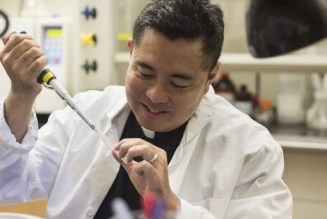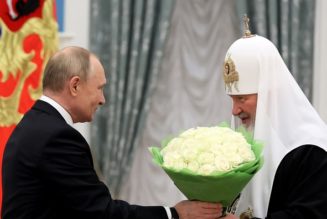“Poland, the nation of Mary, the land of saints and blesseds!”
Thus Cardinal Marcello Semeraro, prefect of the Congregation for the Causes of Saints, concluded his homily at the beatification Mass in Warsaw of Cardinal Stefan Wyszyński and Mother Elżbieta Róża Czacka.
The Marian dimension was a dominant theme of the beatification. The Marian date also made the beatification more powerfully symbolic than most. That was evident, too, in the extraordinary reliquaries that were used, as well as in the stories of a remarkable friendship that the beatification emphasized.
Marian Date With Polish History
September gives us a Marian week — three feasts within an octave: the Nativity of Mary (Sept. 8), the Holy Name of Mary (Sept. 12) and Our Lady of Sorrows (Sept. 15).
Given the intense Marian devotion of the new Blesseds, it was not a surprise that a Marian date was chosen for the beatification. What is less well-known is that the Holy Name of Mary, Sept. 12, has a Polish connection.
The Battle of Vienna took place Sept. 11-12, 1683. King Jan III Sobieski led the outnumbered Polish troops into battle against the Ottoman Turks; the future of Christian Europe was at stake if Muslim armies conquered Vienna.
Sobieski prevailed and adapted Julius Caesar to Christian sentiments: Veni, vidi, Christus vincit! (“I came; I saw; Christ conquered!”) The very next year, Pope Innocent XI declared Sept. 12 to be a Marian feast, the Holy Name of Mary, in thanksgiving for the Battle of Vienna.
Sobieski, revered as one of the great Poles of history, is buried in the crypt of Poland’s holiest cathedral, Wawel in Kraków. St. John Paul II celebrated his first Mass as a priest in 1946 at the altar just steps away from Sobieski’s tomb.
Not only Christians remember, of course. The date for the 9/11 attacks was chosen to avenge the Islamic loss at Vienna in 1683.
Given Blessed Stefan’s intense Marian devotion and his own role as father-defender of the nation under communism, the date was highly significant — as was the place.
The Temple of Divine Providence in Warsaw officially opened in 2016, on the 225th anniversary of a promise made by the Polish parliament in 1791. The Sejm, in thanksgiving for the May 3, 1791, constitution, promised to build a shrine to Divine Providence. Four years later, Poland was wiped off the map of Europe. But Poland kept its promise, and when liberty and prosperity finally returned after communism, 200 years later, the shrine was built.

Evocative Reliquaries
The other sacred “architecture” marking the beatifications were the extraordinary reliquaries that were used for the relics of the new Blesseds.
For Blessed Stefan, the reliquary depicted the empty silhouette of Our Lady of Częstochowa, the shrine where he offered his first Mass as a priest and where he chose to be consecrated a bishop. Why the empty silhouette?
Blessed Stefan led a monumental preparation for the 1,000th anniversary of Polish Christianity in 1966. For nine years he sent a replica of the Częstochowa icon to be venerated at all the parishes in Poland. Tens of thousands came, to the exasperation of the communist regime. So the regime forbade the icon to travel! Blessed Stefan sent around the empty silhouette instead — and the crowds only grew larger. The reliquary was thus a fitting bit of pious dancing on the grave of communism.
The reliquary for Blessed Elżbieta Róża Czacka was even more unusual, with the relics encased in a sculpture of two hands reading in Braille. Mother Elżbieta had founded a religious order to serve her fellow blind people. Having lost her sight as a young woman, the young Róża, using her family wealth, traveled throughout Europe to learn the best practices for assisting the blind to live with dignity. Upon her return to Poland, she developed a Braille alphabet for Polish; she was the first to do so. At the beatification Mass, one of the prayers of the faithful was read by a blind man reading from a Braille text.

Spiritual Friendship
It is not unusual for saints to have saintly companions. We think of Ignatius of Loyola and Francis Xavier, or Don Bosco and Dominic Savio, or John Paul and Mother Teresa.
The spiritual friendship of the two new Blesseds was inspiring and was highlighted in the homily text of Cardinal Semeraro, which was mostly read in a Polish translation by Auxiliary Bishop Piotr Jarecki of Warsaw.
Father Stefan Wyszyński met Mother Elżbieta Czacka in 1926, just two years after his own ordination. In 1920, while still a seminarian, he had met Father Władysław Korniłowicz, who would become a spiritual father, “one of the greatest influences” in his life, Cardinal Wyszyński would later say. Father Korniłowicz was close to the sisters of Mother Elżbieta, for whom he was also a spiritual father. Thus the two “children” met. Father Korniłowicz would teach at the Catholic University of Lublin in the late 1920s, where his influence over Father Wyszyński would grow while the latter was doing his doctorate there.
In 1930, Father Korniłowicz would settle permanently in Laski amid the congregation founded by Mother Elżbieta.
Father Korniłowicz died in 1946 and has already been declared “Venerable,” awaiting confirmation of a miracle for beatification. He may join his spiritual children on the altars.
Mother Elżbieta had established her community for the blind in Laski, a small town near Warsaw. During the Second World War, Blessed Stefan took refuge there, spending time with the sisters and the children. At the same time, he was a chaplain to the Polish resistance fighters in the 1944 Warsaw Uprising.
Cardinal Semeraro recalled that, while at Laski, Father Wyszyński found a piece of burning paper that had been blown from the charred ruins of the capital.
“On it, he read these words: ‘You will love,’” Cardinal Semeraro said. “Wyszyński, deeply moved by them, took the piece of paper to the chapel, showed it to the sisters, and said: ‘This is the holiest appeal of [the Warsaw Uprising] to us and the entire world. An appeal and a testament: You will love.’”
“Whoever hates has already lost,” he added.
“They both knew how to fill each other with strength, endurance and courage,” Cardinal Semeraro preached on their holy friendship. “He was personally involved in helping all those who experienced abuse and limitations in practicing their freedom and professing their faith; she, blind among the physically and spiritually blind, helped all those who were abandoned and left at the margins of society.”
“Mother Czacka was a person who constantly stood before the face of her Good Lord. That is why she was able to share and nourish so many people around her with love,” Cardinal Wyszyński said when celebrating the funeral of his friend in 1961.
The Polish bishops, in a letter for the beatification, noted how deep that friendship was.
“Before his departure for Rome for the sessions of the [Second Vatican] Council, before the difficult talks with the communist authorities of those days, he would come to Laski without giving notice or announcing himself, to pray at her grave for at least a while,” the bishops wrote. “Every year, with the exception of the period of his imprisonment or illness, after the Holy Thursday mandatum in the archcathedral, he would go to Laski for adoration with the blind, the sisters, and the lay employees of the center, and to be filled with the power that flows from the light of the Paschal Cross and the victory of Christ’s love, so that he could then have it for everyone.”
The two friends will have feast days close together — Blessed Elżbieta on May 19 and Blessed Stefan on May 28.
Join Our Telegram Group : Salvation & Prosperity
